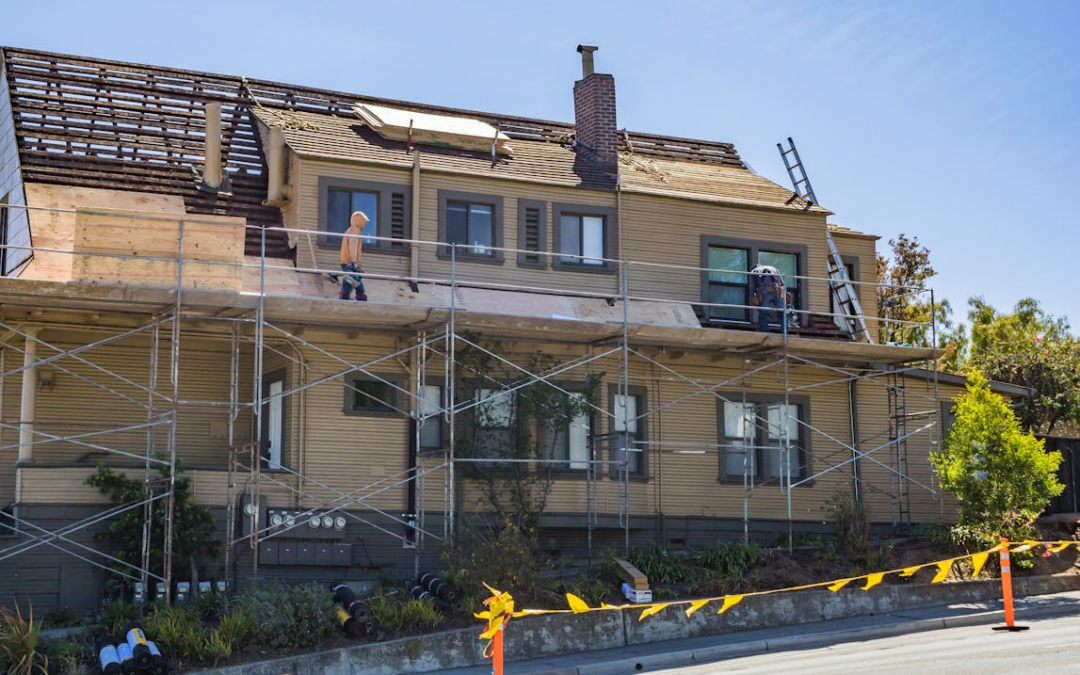An older home demands diligent attention to ensure functionality and safety continuously. Maintenance and repair can seem overwhelming, but you can keep the character of an old home by being attentive and fixing minor wear and tear. Here are five helpful repair and maintenance tips for your older home.
Routinely Check for Hidden Issues
Older homes may have issues lurking behind their old façade (leaking plumbing or faucets, cracks in the foundation, old wiring). Review your home periodically to minimize those surprises and save money.
Uncover evidence of water damage, cracked walls, or unusual odor (possible indication of mold or gas leak) by reviewing annually. Pay attention to the attic and basement for warped beams and insects/pests: additional early indicator signs. Don’t forget your flashlight in the dark corners, or possibly buy or borrow a moisture meter to help look for dampness.
Being aware of problems in advance rather than later saves you a lot of money and helps to keep the house in good standing. If you’re not sure what to look for, a checklist from a historic home preservation website would be a great first look. Hiring a reliable roofing company will keep the worth of your old home intact and will prevent you from committing the novice mistakes that may be made in restoring older houses.
Repair Electrical Systems Safely
Many older homes were overloaded with electrical systems that couldn’t handle today’s loads, like knob-and-tube wiring or under-sized circuits. Flickering lights, buzzing from grounded outlets, or the breaker constantly tripping are all signs that it is time to repair your electrical system.
Begin by mapping out the electrical wiring in the house and making notes on outdated wiring systems. Replacing electrical systems is not a do-it-yourself project. You will need to hire a licensed electrician who works on older homes to fix it safely per the building codes.
The cost can vary depending on the house size from $5,000 to $15,000. While this appears to be an expensive price, knowing the peace of mind that your house is not a fire risk and is running at its highest efficiency level possible, it will prove to be worth every penny.
Remember, if everything is functioning perfectly, and you want to keep certain things like vintage switches, you can keep some original fixtures; make sure they are safe. You can help preserve the character of your home while incorporating electrical systems that are safe and effective with something like a modern adapter.
Strengthen the Foundation and Structural Concerns
Settling of foundations is normal in older homes, which may lead to floor slopes or cracked walls. Look for doors that don’t close right or gaps around windows. Small cracks can be repaired with epoxy, while professionals may best tackle more significant issues. Hiring a structural engineer to review your foundation is wise: $500 for an inspection or up to $10,000 for repairs, which may include underpinning.
Sealing the basement or crawlspace against moisture with sealants or a sump pump will limit further damage. Don’t put this off; your entire house may be compromised with a bad foundation. Regularly cleaning gutters also helps; collecting water from roofs and draining it away from the house will spare foundations exposure to damaging moisture.
Modernize with Caution
Most older homes are not well-insulated; their thin walls and leaky windows are responsible for substantial heating bills. The first step is to seal the air leaks with caulk or weather stripping on doors, windows, and attic doors.
You can insulate walls or the attic and save 15% to 20% on heating. Implement vapor-permeable insulation such as cellulose to reduce moisture problems in older homes. Double-glazing will keep heating costs low and cost, on average, $300 to $600 per window, depending on window quality, if you prefer to leave the windows intact.
Please do not replace the windows with vinyl; it is not historic and would be tacky for most older homes. Less obtrusive energy-savings might be considered a programmable thermostat with an average price of $50 to $150. In summary, be cautious with your upgrades, and avoid over-modernizing as it will lose your home’s historic character and value.
Take a Careful Approach to Repairs
Repairs in old houses are usually not a quick fix; they take timing and thought. Prioritizing urgent issues, fixing a leaking roof is more critical than scraping paint. Make a five-year plan and budget to spend $1,000 to $5,000 per year, depending on the house’s condition, partially as ‘maintenance.’ If you are doing a major project or just a lot of work, consider splitting it into phases. For example, if rewiring is within your scope, consider rewiring one floor now and the other later.
Save materials that match the older ones when possible, salvage yards or some dealers specialize in period-appropriate material (for example, they often have period-appropriate tiles or other fixtures). If you take before and after pictures and record notes, it will help you in the future if you sell.
Endnote
Preserving an old house may be an act of love while balancing practicality and preservation. By inspecting regularly, hiring professionals as needed, and honoring the home’s origin, you’ll have a beautiful, substantial home to enjoy for generations.

Recent Comments